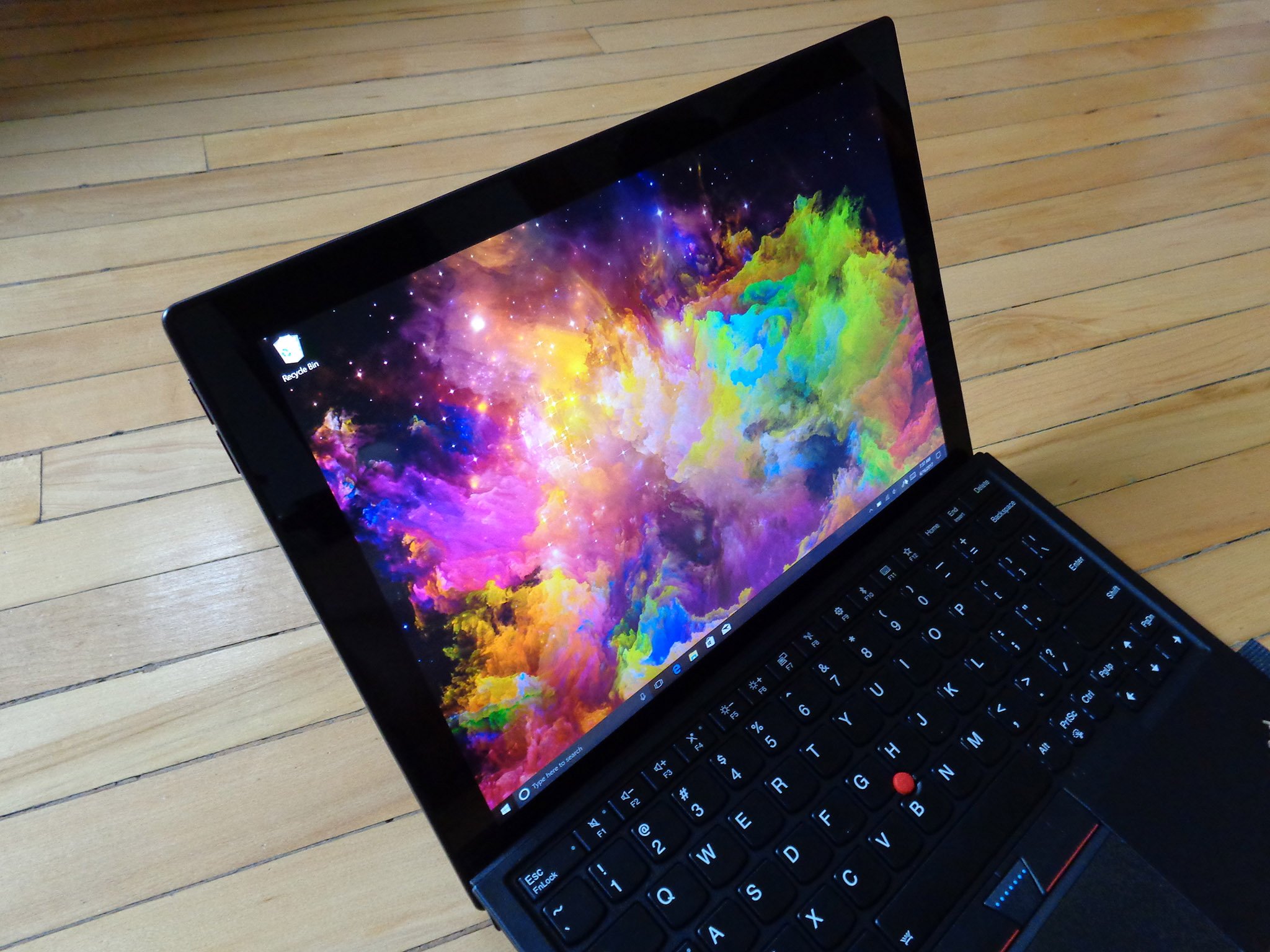
The new ThinkPad X1 Tablet has a lot going for it and will no doubt appeal to a lot of business-oriented folks who don't need a full-sized ThinkPad. There are, however, a few things you might dislike. Here's a good look at the X1 Tablet to help you decide whether or not it's for you.
About this review
Lenovo loaned Windows Central a review unit of the second-generation ThinkPad X1 Tablet. This specific configuration has an Intel Core i5-7Y57 vPro processor, 8GB of DDR3 RAM, and a 256GB PCIe solid-state drive (SSD). This exact configuration costs about $1,719.
A former cubicle jockey's awkward ode to the ThinkPad
Lenovo ThinkPad X1 Tablet hardware and specifications
Lenovo has a decent amount of configuration options for this 2-in-1, including vPro processors, SATA and PCIe SSDs, and LTE-A connectivity.
Here is a full list of the tech specs available.
| Category | XX |
|---|---|
| Processor | Intel Core i5-7Y54 (up to 3.2GHz)Intel Core i5-7Y57 vPro (up to 3.3GHz)Intel Core i7-7Y75 vPro (up to 3.6GHz)Dual-core |
| Storage | 128GB SATA III SSD256GB PCIe-NVMe SSD512GB PCIe-NVMe SSD |
| RAM | 8GB/16GB LPDDR3-1866MHz SDRAM |
| Display | 12-inch FHD+ (2160 x 1440) IPS, touch, glossy |
| Graphics | Intel HD Graphics 615 |
| Ports | USB-C 3.1 (Power Delivery)USB-A 3.1Mini DisplayPortmicroSD card readerNano-SIM (optional)3.5mm jackKensington lock slot |
| Audio | Dual stereo speakers |
| Wireless | Intel Dual Band Wireless-AC 8265802.11ac (2 x 2)Bluetooth 4.1 |
| WWAN | Qualcomm Snapdragon X7 LTE-A (optional) |
| Camera | Front-facing 2MPRear-facing 8MP |
| Keyboard | Magnetic attachable ThinkPad keyboard |
| Touchpad | Precision touchpadTrackPoint and physical buttons |
| Pen | ThinkPad Pen Pro (optional) |
| Biometrics | Fingerprint reader (optional) |
| Security | TPM 2.0 for enterprise securityvPro technology |
| Battery | Two-cell 37WHr |
| Weight | 1.69 lbs (0.76 kg), tablet only2.35 lbs (1.07 kg), tablet and keyboard |
| Dimensions | Tablet only:11.47 inches x 8.25 inches x 0.34 inches291.5 mm x 209.5 mm x 8.45 mmTablet and keyboard:11.47 inches x 8.25 inches x 0.55 inches291.5 mm x 209.5 mm x 13.85 mm |
| OS | Windows 10 HomeWindows 10 Pro |
| Color | Black |
| Price | Starting at $1,449 |
The good stuff
Get the Windows Central Newsletter
All the latest news, reviews, and guides for Windows and Xbox diehards.
What you'll like about the ThinkPad X1 Tablet
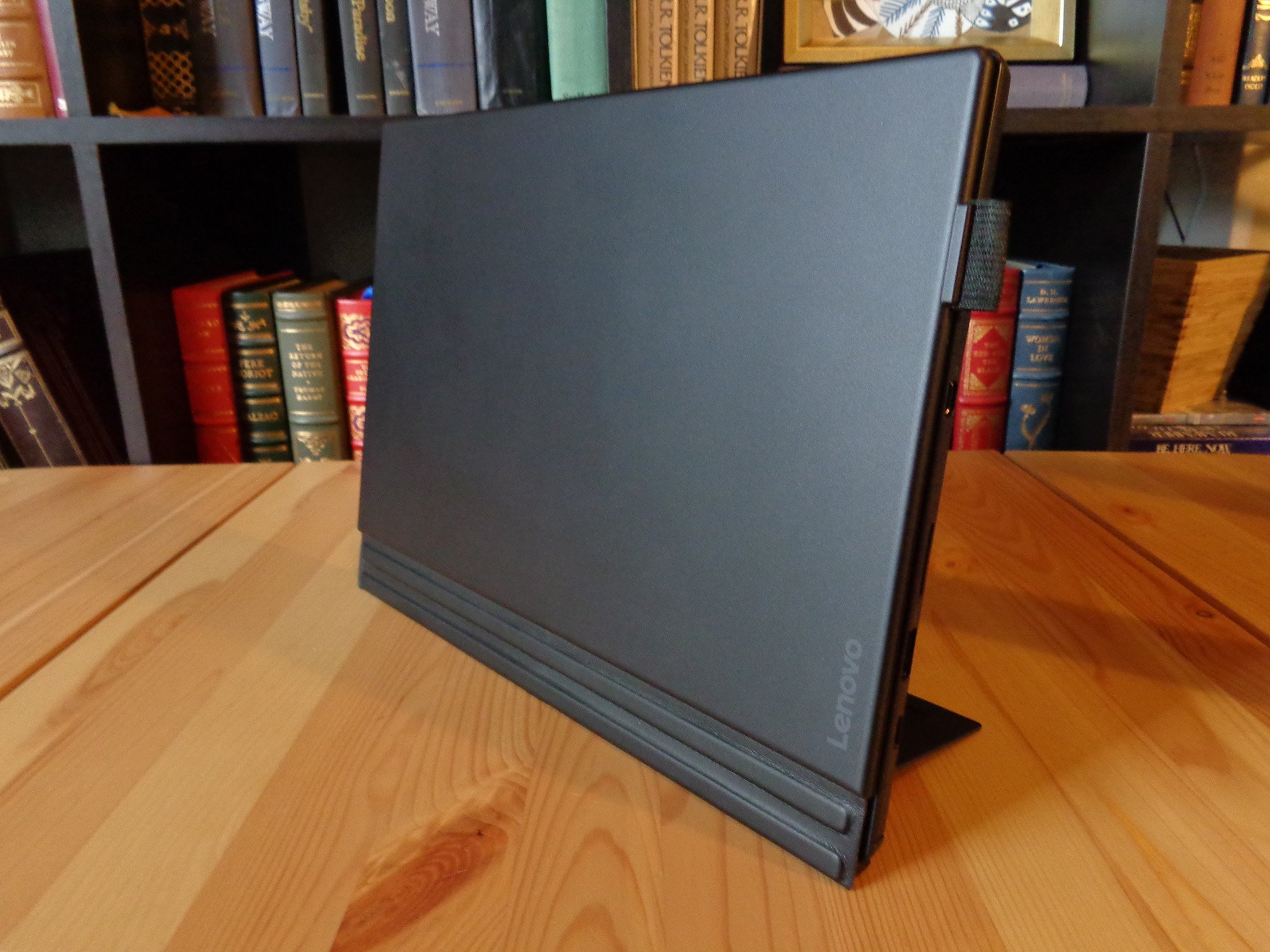
Lenovo has taken the essential parts of a ThinkPad and distilled them into a 2-in-1 device with an included detachable keyboard. The magnesium and fiber chassis and keyboard have the usual matte black color with a bit of sparkle, and they have the usual soft-touch finish. The tablet has a bit of flex to it but seems to hold up to a fair amount of abuse — you won't be scared to pop it in your bag — and has MIL-STD-810G military durability certification to back this up.
On the tablet are physical power and volume buttons for quick access without the keyboard attached, and a fingerprint reader in the bezel allows for speedy Windows Hello sign-ins. At the top of the display is a front-facing, two-megapixel webcam, and on the back of the chassis is an eight-megapixel camera.
The ports on the left and right edges are spaced well and won't cause congestion when you're working with multiple peripherals. On the left side is a Kensington lock slot and a 3.5mm jack, and right-side ports include Mini DisplayPort, USB-C 3.1, and USB-A 3.1. This is a nice blend of ports for using your current and legacy devices, but the lack of Thunderbolt 3 is also something that a lot of people criticized the original X1 Tablet for. As for the Nano-SIM and microSD card slots, they're tucked away under the kickstand.
Detachable keyboard is ThinkPad through and through
Fans of ThinkPad keyboards will love the keyboard. Despite its compact size, key spacing is about the same as larger laptops (although keys are marginally smaller), key travel is comfortable, and the cupped keys hold your fingers nicely. There are two levels of backlighting, and you have volume, brightness, and snipping tool keys among other handy shortcuts.
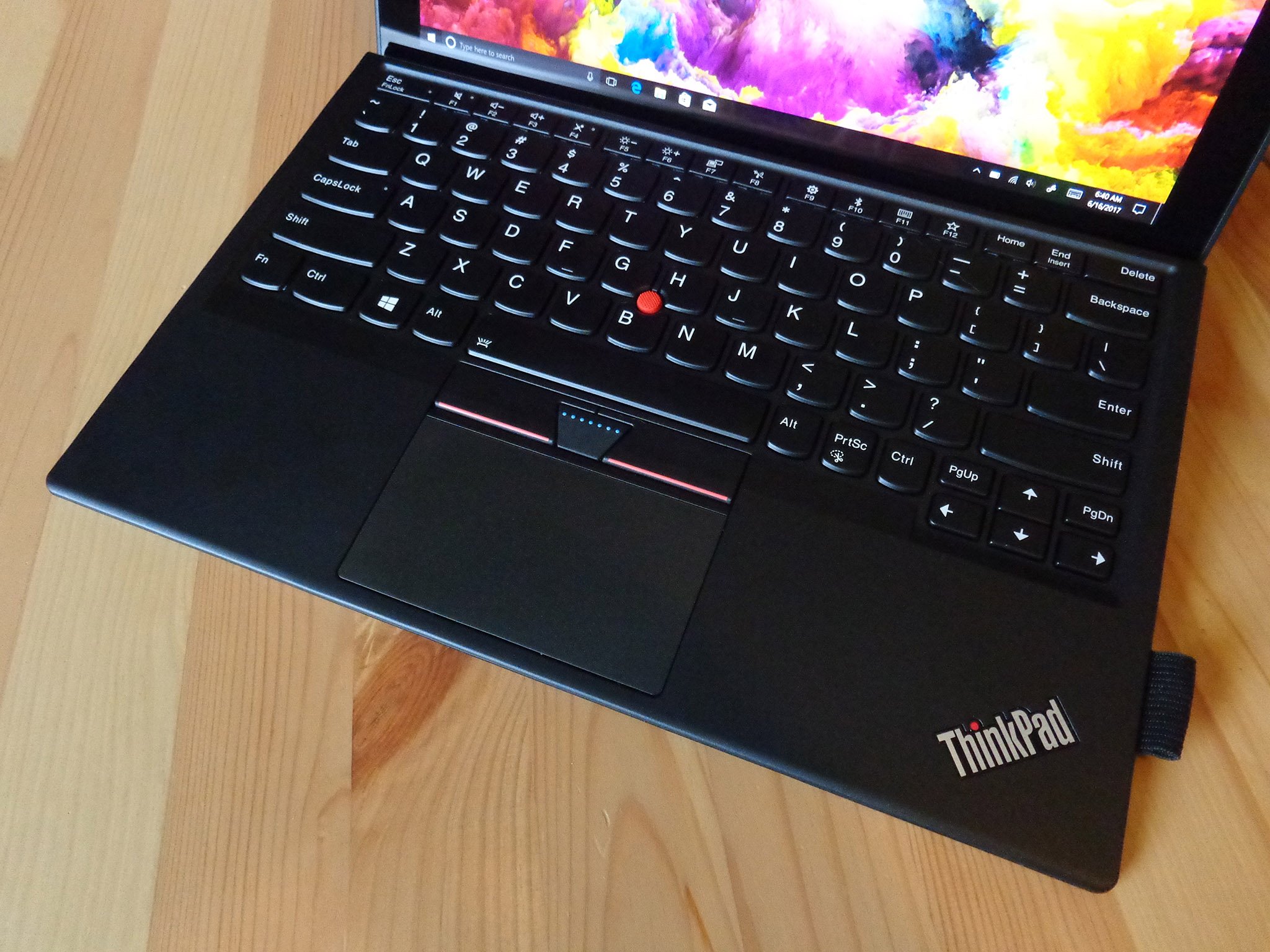
The trusty TrackPoint and physical buttons are also here, and they are a nice addition for long-time ThinkPad users. If you aren't one for the little red nub, a mylar Precision touchpad sits just below the spacebar. It suffers from the enthusiastic sensitivity most other ThinkPads also suffer from out of the box, but a few tweaks in the settings calmed it down.
The keyboard has a magnetic attachment that easily connects to the tablet. While typing, you'll want to release the kickstand, which is hinged along the bottom of the tablet. Because the kickstand deploys from the bottom, it lays out flat and remains stable in your lap. It's far more stable than kickstands that are hinged in the middle of the device, like that of the Surface Pro. The keyboard is actually quite rigid, as well, providing an overall superior typing experience while in your lap.
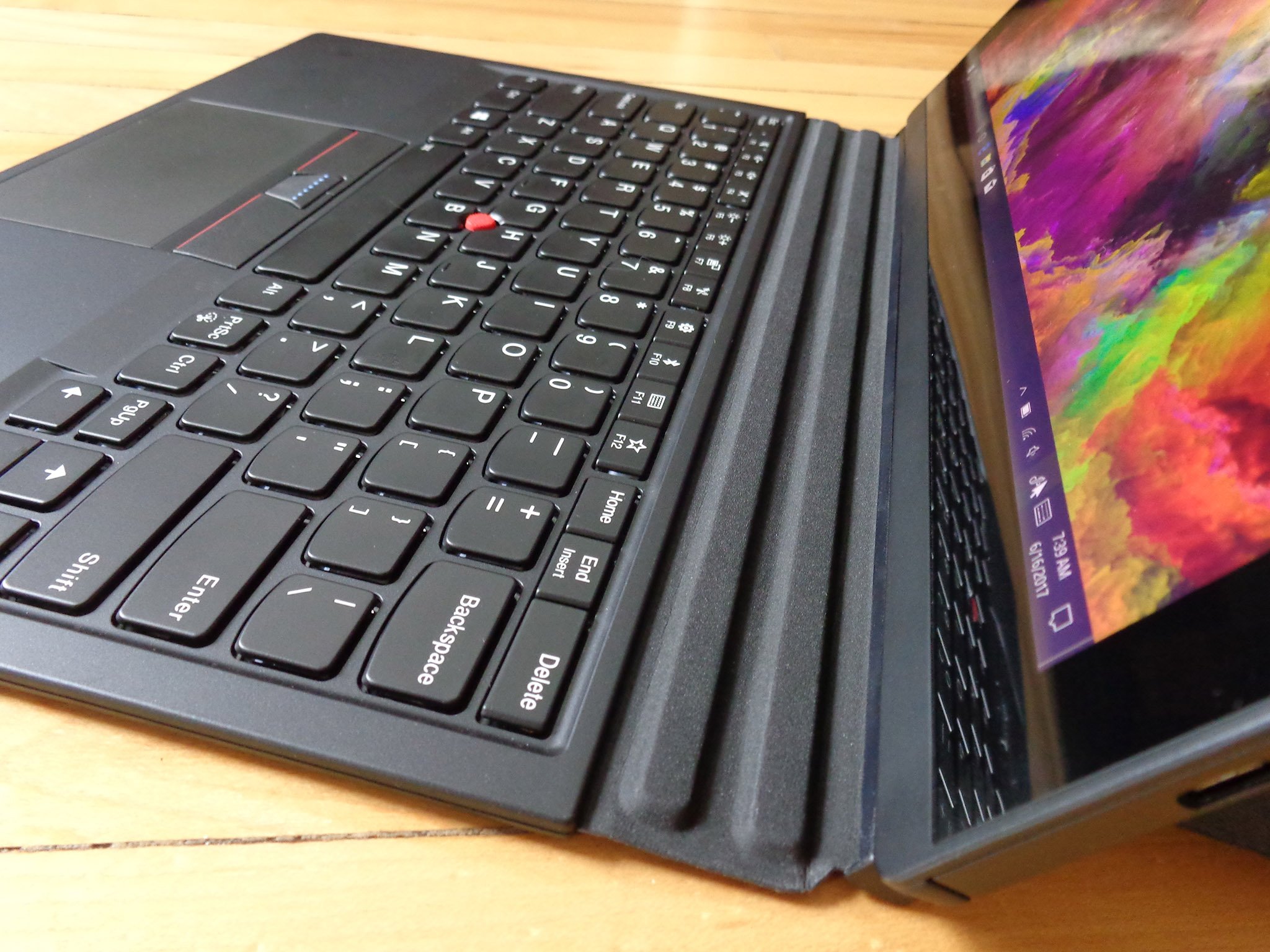
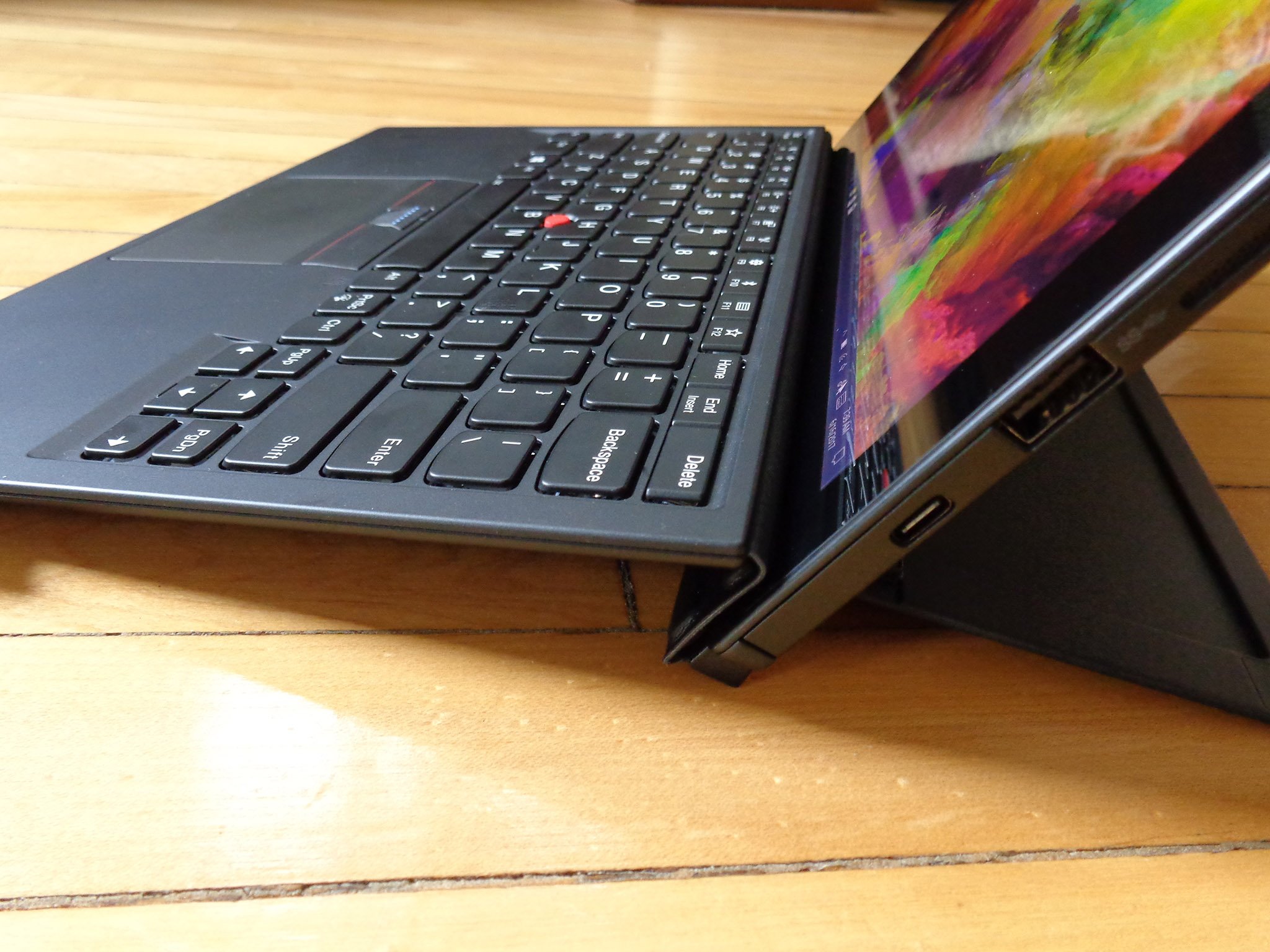
Many business-oriented folks will love the modules (sold separately) that can be attached where the keyboard attaches. The presenter module has a Pico projector, HDMI port, and 10WHr battery, and the productivity module has USB-A 3.0, HDMI, OneLink+, and a 24WHr battery. And the keyboard can still be attached when using the modules.
This ThinkPad display is bright and inking is satisfying
The 12-inch display with a 2K resolution and IPS panel is bright enough (360 nits) to use outdoors and has great color. In testing, it hit 96 percent sRGB and 73 percent Adobe RGB, which are both respectable results. I saw no problems with contrast, and everything was crisp and clear.
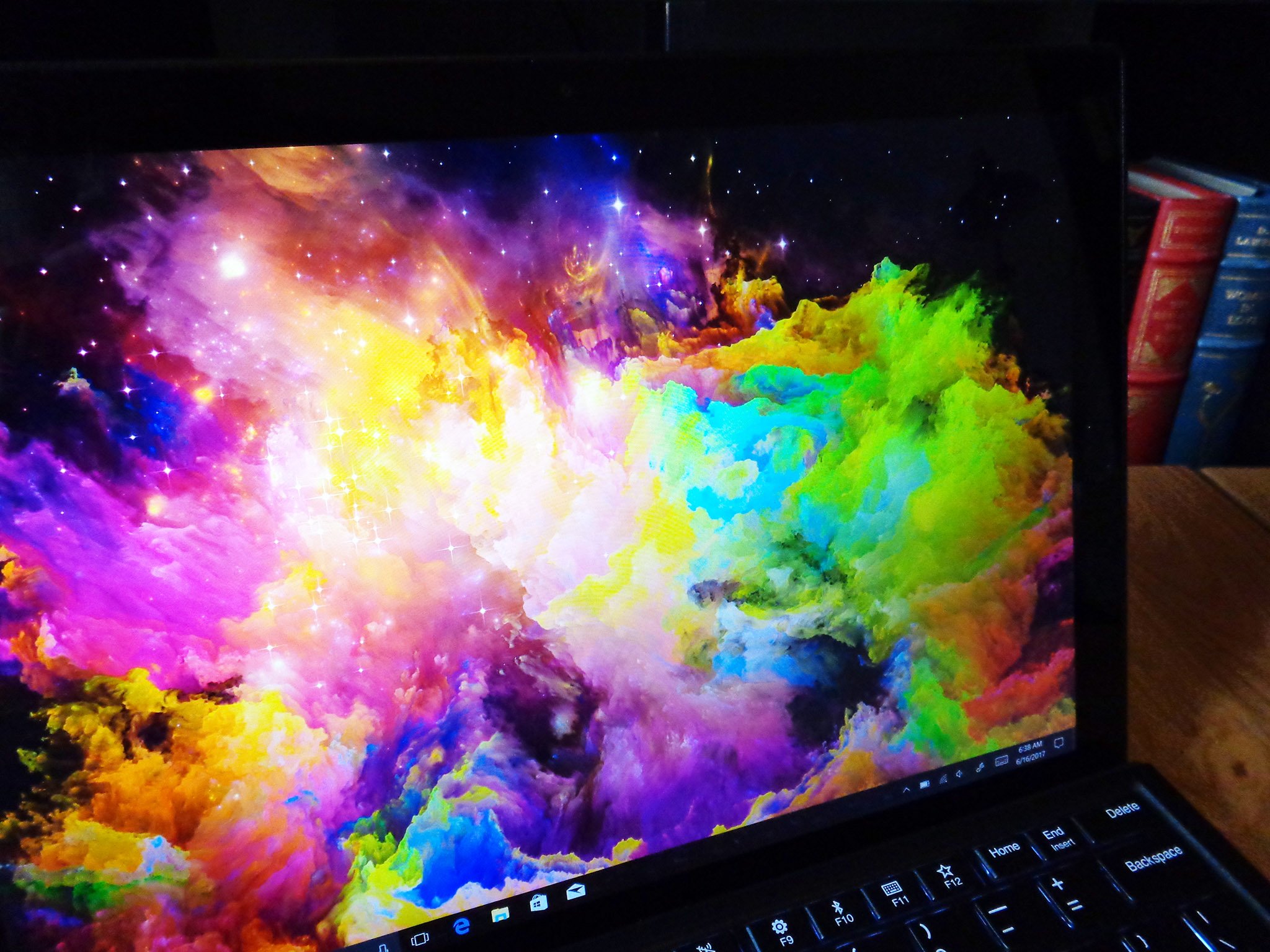
The capacitive panel has multi-finger gesture support, and the included ThinkPad Pen Pro provides a satisfying inking experience. The pen has 2,048 levels of pressure and two side buttons you can set to work with certain apps, and its low latency feels almost like you're using a real pen and paper. It has a clip near the top but does not have an eraser, something you might be used to if you're a Surface Pen user.
Lenovo ThinkPad X1 Tablet performance
Again, this configuration of the ThinkPad X1 Tablet came with an Intel Core i5-7Y57 vPro processor, 8GB of LPDDR3-1866MHz SDRAM, and a 256GB Samsung PM961 PCIe-NVMe SSD.
I used this tablet as my primary device for about a week and a half and was generally happy with its performance.
CPU
Geekbench 4.0 Benchmarks (Higher is better)
| Device | CPU | Single core | Multi core |
|---|---|---|---|
| Lenovo ThinkPad X1 Tablet (2nd Gen) | i5-7Y57 vPro | 3,965 | 7,259 |
| Surface Pro 2017 | i7-7660U | 4,513 | 9,346 |
| Surface Laptop | i5-7200U | 3,725 | 7,523 |
| Lenovo ThinkPad T470 | i5-7300U vPro | 4,394 | 8,580 |
| Dell Latitude 5285 | i7-7600U | 4,635 | 9,289 |
| Lenovo ThinkPad X270 | i7-7600U | 4,512 | 8,566 |
| Lenovo ThinkPad T470s | i5-7300U vPro | 3,919 | 6,077 |
| Lenovo Yoga 720 | i5-7200U | 3,881 | 7,509 |
| Lenovo X1 Carbon | i5-7300U | 4,139 | 8,311 |
| HP EliteBook x360 G2 | i7-7600U | 4,496 | 8,435 |
| Samsung Notebook 9 15 Ext | i7-7500U | 4,316 | 8,320 |
| Dell Latitude 7280 | i7-7600U | 4,381 | 7,935 |
| Dell XPS 13 (9360) | i7-6560U | 4,120 | 7,829 |
| HP Spectre 13 | i7-7500U | 4,100 | 7,469 |
| Surface Book | i7-6600U | 3,948 | 7,415 |
The processor in the X1 Tablet is a real performer, surpassing some other Core i5 models we've tested. For business purposes, say word processing, heavy web browsing, and a bit of multimedia editing, you shouldn't have a problem. Keep in mind this is a fanless processor, so you won't be hearing anything kick on when the going gets tough.
GPU
Geekbench 4.0 Graphics OpenCL (Higher is better)
| Device | Score |
|---|---|
| Lenovo ThinkPad X1 Tablet (2nd Gen) | 17,454 |
| Surface Pro 2017 | 30,678 |
| Surface Laptop | 19,256 |
| Lenovo ThinkPad T470 | 21,276 |
| Dell Latitude 5285 | 21,921 |
| Lenovo ThinkPad X270 | 17,376 |
| Lenovo ThinkPad T470s | 16,635 |
| Lenovo Yoga 720 | 18,185 |
| Lenovo X1 Carbon | 20,932 |
| Dell Latitude 5480 | 21,616 |
| Dell XPS 13 (9360) | 19,410 |
| Surface Book | 18,197 |
| Dell Latitude 7280 | 17,827 |
Graphics in the X1 Tablet are handled by integrated Intel HD Graphics 615. You won't be playing any intensive video games here, but you can get away with some favorites, like Minecraft, at max settings without a problem. Overall, the X1 Tablet keeps up with a lot of other laptops we've reviewed.
PCMark
PCMark Home Conventional 3.0
| Device | Score | Comparison |
|---|---|---|
| Lenovo ThinkPad X1 Tablet (2nd Gen) | 2,461 | Better than 40 percent of all results |
| Surface Pro 2017 | 3,055 | Better than 57 percent of all results |
| Surface Laptop | 2,494 | Better than 40 percent of all results |
| Lenovo ThinkPad T470 | 3,103 | Better than 62 percent of all results |
| Dell Latitude 5285 | 3,079 | Better than 57 percent of all results |
| Lenovo ThinkPad X270 | 3,009 | Better than 57 percent of all results |
| Lenovo ThinkPad T470s | 2,576 | Better than 40 percent of all results |
| Lenovo Yoga 720 | 2,717 | Better than 46 percent of all results |
| Lenovo X1 Carbon Core i5 | 2,965 | Better than 57 percent of all results |
| Samsung Notebook 9 15 Ext | 2,998 | Better than 57 percent of all results |
| Dell XPS 15 (9560) | 3,534 | Better than 71 percent of all results |
| Dell Latitude 7280 | 2,829 | Better than 52 percent of all results |
| HP Spectre x360 15 | 2,472 | Better than 41 percent of all results |
The PCMark Home Conventional test measures how well a bunch of your system components work together in a variety of everyday tasks. This ThinkPad X1 Tablet didn't put up outstanding results, and you'd no doubt want to opt for the Core i7 configuration with 16GB of RAM if you want to perform any specialized tasks. Still, I didn't notice any standout issues in general daily use.
SSD
CrystalDiskMark (Higher is better)
| Device | Read | Write |
|---|---|---|
| Lenovo ThinkPad X1 Tablet (2nd Gen) | 1,353 MB/s | 1,275 MB/s |
| Surface Pro 2017 | 1,285 MB/s | 963 MB/s |
| Surface Laptop | 423 MB/s | 237 MB/s |
| Lenovo ThinkPad T470 | 1,079 MB/s | 716.1 MB/s |
| Dell Latitude 5285 | 1,300 MB/s | 1,113 MB/s |
| Lenovo ThinkPad X270 PCIe | 1,049 MB/s | 636.9 MB/s |
| Lenovo ThinkPad T470s | 1,557 MB/s | 1,333 MB/s |
| Lenovo Yoga 720 | 1,904 MB/s | 1,169 MB/s |
| Lenovo X1 Carbon | 1,518 MB/s | 1,188 MB/s |
| Samsung Notebook 9 15 Ext | 1,365 MB/s | 1,213 MB/s |
| Dell Latitude 5480 SATA | 443 MB/s | 469 MB/s |
| Razer Blade Pro | 2,571 MB/s | 2,467 MB/s |
| Dell XPS 15 (9560) | 2,207 MB/s | 1,628 MB/s |
| Dell XPS 13 (9360) | 1,287 MB/s | 794 MB/s |
| HP Spectre x360 15 | 1,128 MB/s | 862 MB/s |
| Surface Book | 1,018 MB/s | 967 MB/s |
The Samsung PM961 SSD keeps up with all the other hardware here, providing snappy read and write speeds that were better than a lot of other laptops we've tested. You shouldn't have any problems, as long as you get this type of SSD. There is a bit of a shortage on the market, so you aren't guaranteed one.
The bad stuff
What you'll dislike about the ThinkPad X1 Tablet
Many of the things you might dislike about the ThinkPad X1 Tablet are part of a feature you probably will like depending on what you use the tablet for.
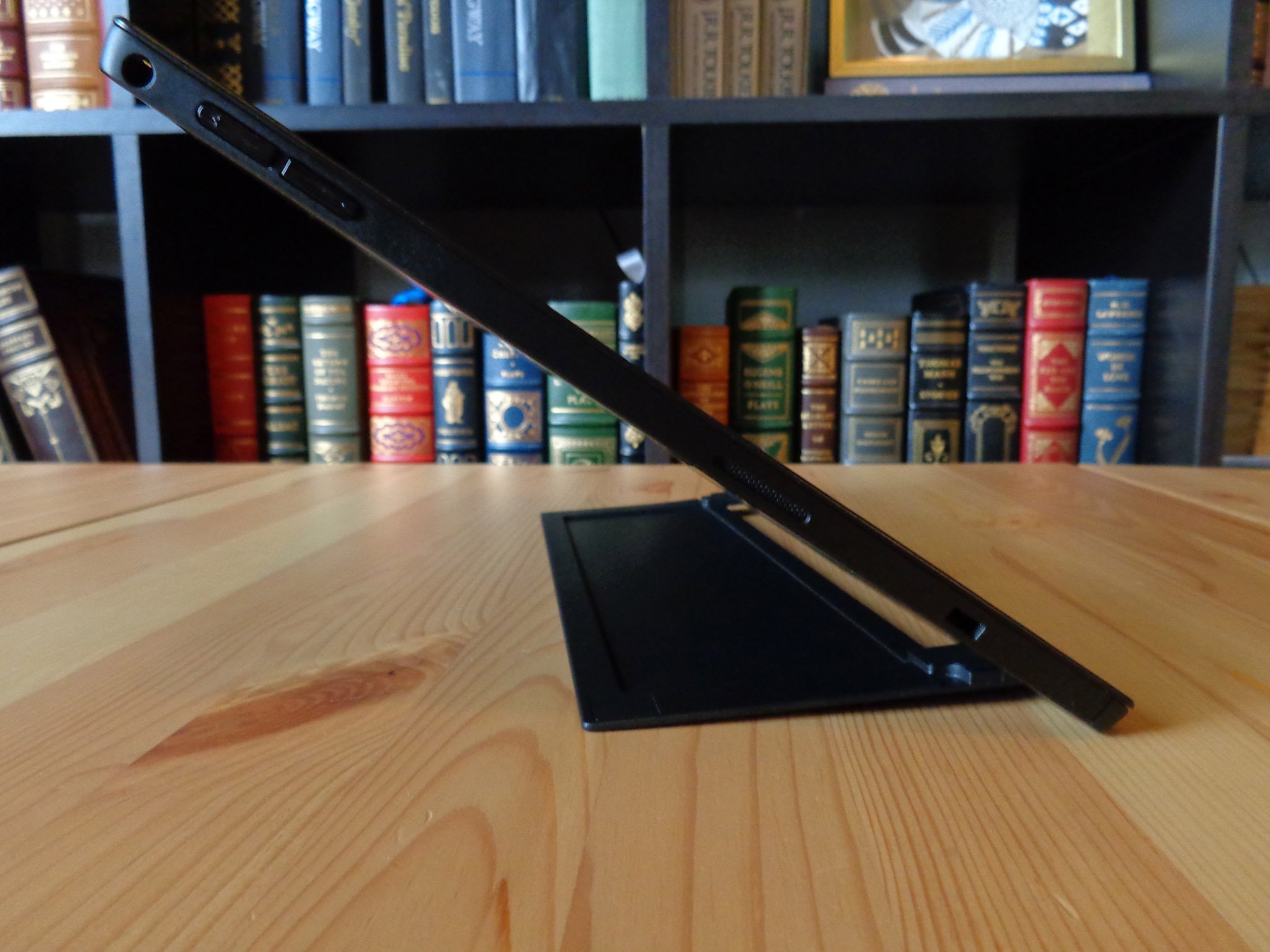
The kickstand is more suited to your lap
The kickstand offers plenty of stability in your lap, but when using it on a flat surface, there's a limited range of motion before it wants to suck up into the back of the tablet. For typing, you'll be fine, but for drawing with a pen, you're looking at a maximum 45-degree angle before it falls flat on the table. That's unfortunate.
The kickstand's design creates a few seams along the back, and the module dock cover adds to those seams. In order to attach a module, you must remove a slim piece of plastic and set it aside somewhere safe. The modules are an ingenious addition for anyone who gives a lot of presentations, but the setup just seems a little awkward. I'd say forego the modules completely, but you'll need one if you want a long battery life.
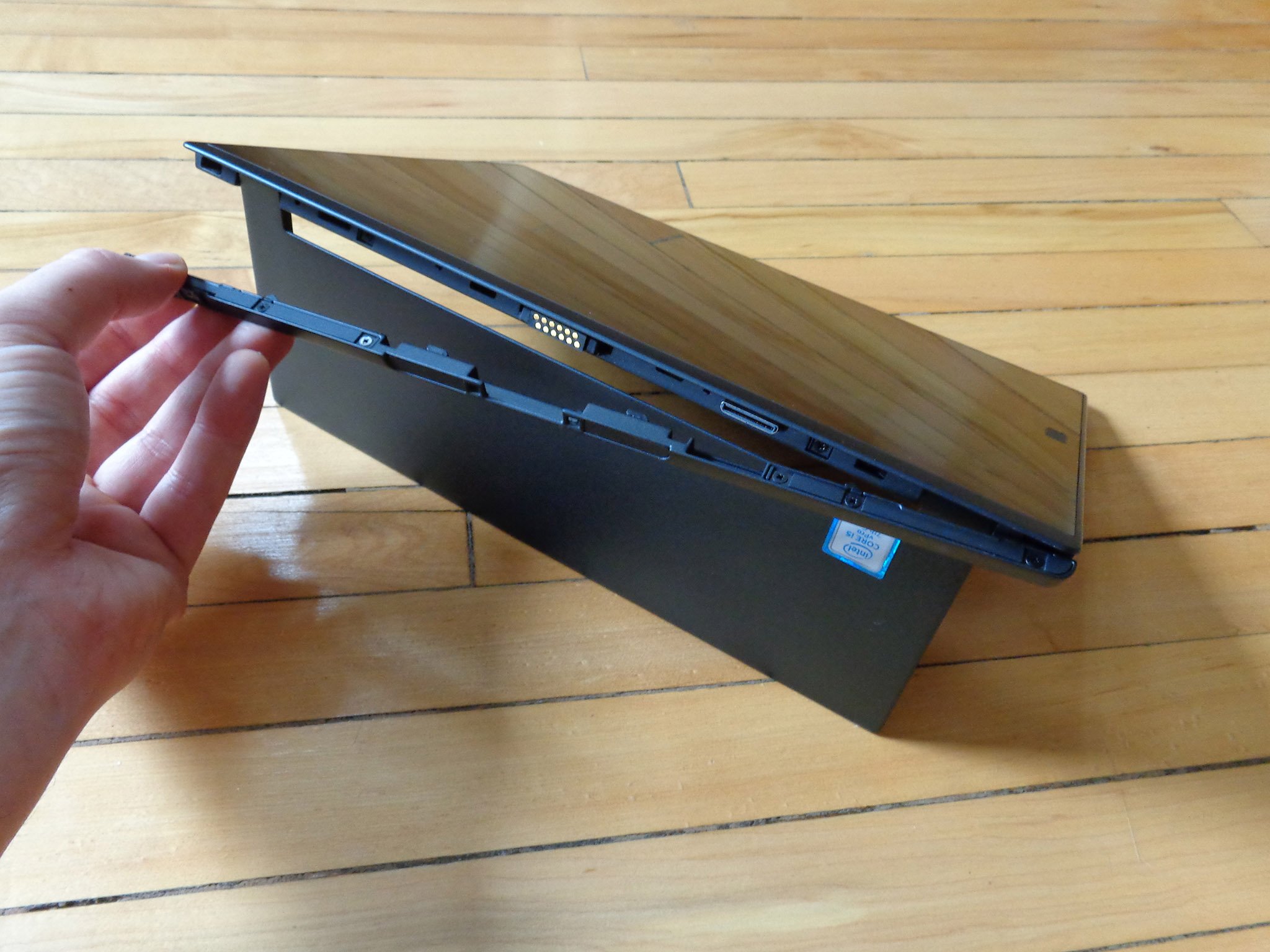
Speakers and battery are lacking
Without adding a module to the bottom of the X1 Tablet, you're looking at about five or six hours of regular use with brightness at 60 percent. That isn't exactly optimal, especially if you're in the field or on the road and don't have access to an outlet.
There is a speaker on each side of the X1 Tablet, and they do a pretty poor job of pumping out the sound. Music is hollow, and at high levels, there's a bit of distortion. This isn't an entertainment center, however, so that shouldn't be a big deal.
ThinkPad Pen Pro was tacked on
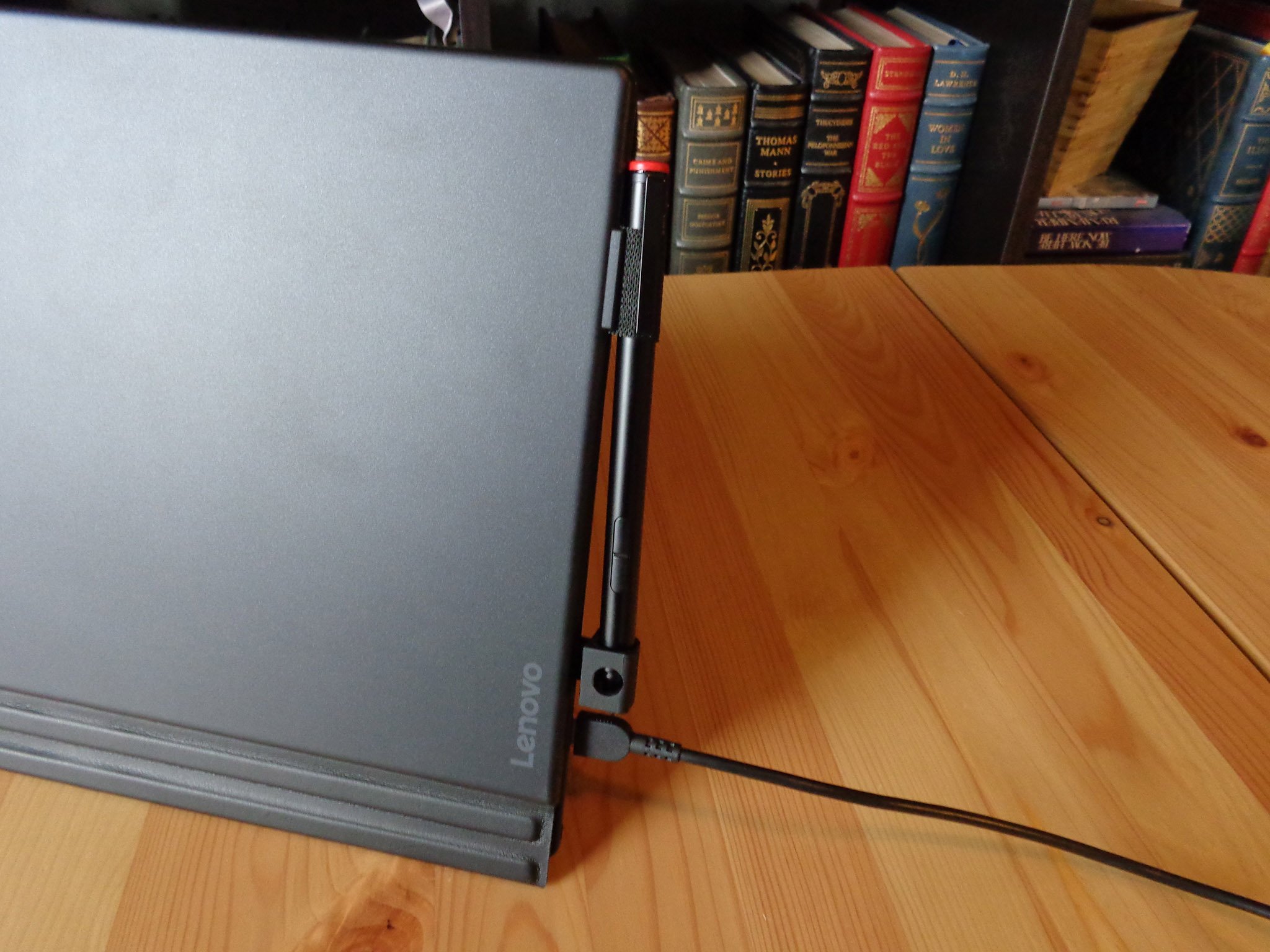
Instead of the Pen Pro being an integral part of the 2-in-1 experience, it seems more like an afterthought. A clip that the pen fits into is designed to slip into the USB-A slot. If you're charging, it promptly gets in the way. There's also a pull tab on the keyboard that can hold the pen, but it's unclear if that's its original purpose. The pen works well, but you'll likely end up carrying it separately than the tablet.
What it all means
Lenovo ThinkPad X1 Tablet review: Conclusion
Lenovo's goal was to take what we love about the ThinkPad line and distill it into a 2-in-1 device. Overall, the company succeeded — the ThinkPad keyboard, the durable matte-black chassis, and the business-oriented configurations are all here — but there are still some nagging issues.
Without a module tacked onto the bottom, you're unlikely to get a full day of use out of the internal battery, and the kickstand is more geared toward typing than inking with a pen.
The display is vibrant and has fantastic color, and the modules, despite what it takes to attach them, are a great addition for anyone giving a presentation or who needs more ports on their tablet.
Bottom line? If you aren't a diehard ThinkPad fan, there are other 2-in-1 alternatives that are hard to pass up. Love ThinkPad and need something portable? The ThinkPad X1 Tablet is your No. 1 option.
Pros:
- Kickstand is stable in your lap.
- Attachable keyboard is classic ThinkPad design.
- Attachable modules add options.
- Decent overall performance.
- Bright, colorful touch display.
Cons:
- Speakers almost aren't worth using.
- Kickstand design isn't optimal for inking.
- Pen seems like an afterthought.
- Stock battery won't get you through a workday.

Cale Hunt brings to Windows Central more than eight years of experience writing about laptops, PCs, accessories, games, and beyond. If it runs Windows or in some way complements the hardware, there’s a good chance he knows about it, has written about it, or is already busy testing it.
